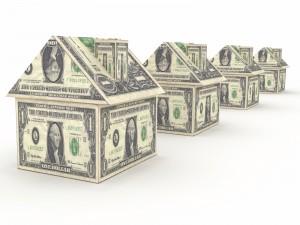(This was originally a post I made a little while back, 2014 to be exact, but is very relevant and to the point with regards to property taxes around central Illinois. It’s one of the most often asked, and most often confused questions about homes in the area….which cities/areas/subdivisions are the highest or lowest, why is there such a difference between homes of similar values when it comes to taxes, etc.)
By Mark and Jennifer Monge
Property taxes are a funny thing, in a dark comedy/tragedy type of way. As you are looking around at different homes you may find, for example, 8 homes that are all on the market for $200,000, but the property taxes vary from a few hundred dollars to many thousand dollars, and this may influence where you decide to buy. But if you do your homework, you may be surprised by what you find out.
Taxes aren’t really fair…I think we would all agree. However I’m referring to how a home is assessed for tax purposes. You may have a $200,000 home on the market that hasn’t sold in the last 20 years that is assessed in the eyes of the tax assessor for $150,000 fair market value, while another $200,000 home on the market may have sold 2 years ago for $225,000, and thus, it assessed for $225,000. So the length of time since the last sale can influence the current property tax valuation, and it can also change it a year or two down the road after you purchase the home.
Let’s look at 8 of the larger markets around Central Illinois. Leave your assumptions at the door, and let’s look at the tax rates. From highest to lowest we have….
8. Peoria Heights…9.5%
7. East Peoria…9.0%
6. Peoria…8.9%
5. Germantown Hills…8.4%
4. Washington…7.6%
3. Metamora…7.2%
2. Morton…7.1%
Drum roll please….coming in at #1 on our list is….
1. Dunlap…6.8%. Shocked? It needs to be explained that the actual TOWN of Dunlap is 6.8%. The majority of homes in the Dunlap school district are actually in the city of Peoria, so the tax rate for most “Dunlap” homes is 8.9%. Copperfield, Nettle Creek and Deerfield are about the only newer subdivisions that are really in the town of Dunlap. Most everything else south of Cedar Hills Drive and west of Knoxville is in the city of Peoria.
What does this mean for an actual tax bill? Let’s assume a house is bought for $200,000 and is actually assessed at $200,000 in the eyes of the tax assessor. The tax bill, assuming it is an owner occupied home, for each community would be…
8. Peoria Heights…$5,763
7. East Peoria…$5,460
6. Peoria…$5,399
5. Germantown Hills…$5,095
4. Washington…$4,610
3. Metamora…$4,367
2. Morton…$4,307
1. Town of Dunlap…$4,125
There are other things to take into consideration as well. Some communities might not have all of the same city services as the others, thus the reason for different tax rates. Commute time is something to factor into, as well as amenities like dining and entertainment. Some communities offer a different price point of home. For example, last year, there were 47 homes sold above $400,000 in the Dunlap school district compared to 7 sold homes in the Metamora/Germantown Hills school district for the same period. That’s something you may factor into your home buying decision when you are thinking about where most of the buyers will be looking when it comes time for you to sell again.
It’s also worth mentioning that the tax rates mentioned above were taken as an average of a few different homes in each community. You may have, for example, one area of Peoria that has one tax rate, but then another area that may have a slightly higher or lower rate because of different tax structures or needs.
The way to figure out what your taxes should be on any particular home is to take the purchase price and then divide that by 3. Then take that number, subtract the $6,000 home owner occupied exemption, and multiply it by the tax rate for that area. You can Google the tax assessors office number for any county and by giving them an address, they will tell you exactly what the tax rate is, as well as what the home is currently assessed for. Sometimes they are right on the money, most times they are off in either direction.
So what should you do? It certainly makes sense to take taxes into account on where you are buying, but look at the whole picture and take into account the other factors such as what you get for the taxes. More importantly, instead of focusing on what the taxes are on the house currently, find out what the tax rate is, make a guess on what you can buy the home for, and then compute what the taxes may adjust to after you buy the house. This way you can make a fair comparison between homes since the current taxes may be way off.
Thanks for reading!
Sincerely,
Mark Monge




